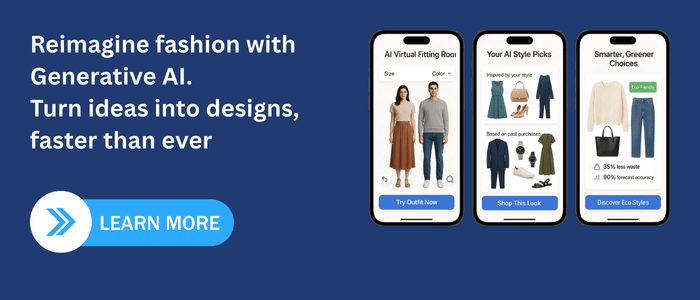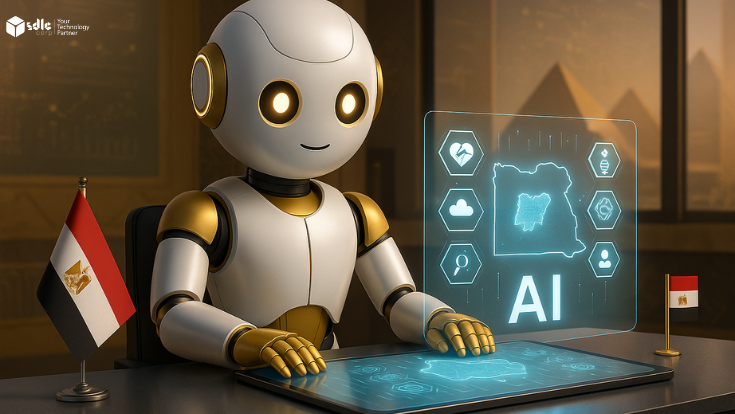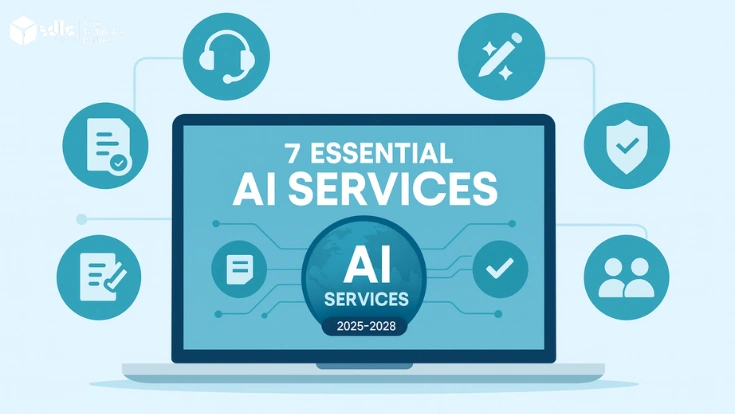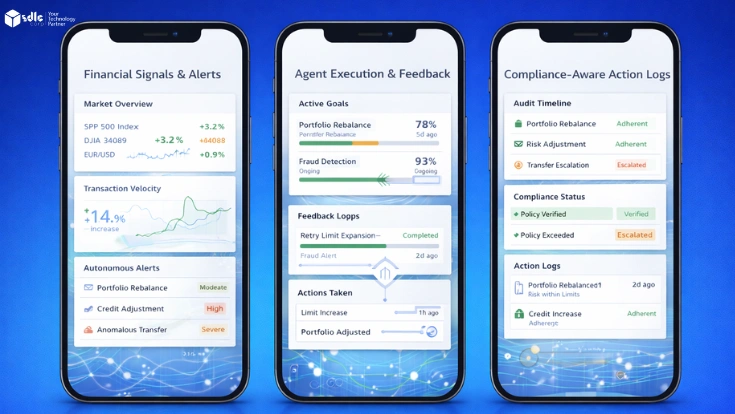Introduction
The fashion industry is rapidly evolving, and Generative AI plays a key role in reshaping how trends are predicted, designs are created, and shopping experiences are personalized. Unlike traditional tools, generative AI can analyze vast datasets to generate new patterns, styles, and collections that align with customer preferences and emerging market demands.
By integrating generative AI, fashion brands can accelerate design cycles, reduce waste, and deliver highly personalized experiences. Collaborating with an AI development company enables businesses to adopt innovative AI-driven solutions, ensuring they remain competitive in a fast-changing fashion landscape.
What is Generative AI in Fashion?
Generative AI refers to machine learning models that not only process information but also create original outputs. This technology is applied in fashion across design, production, marketing, and consumer engagement.
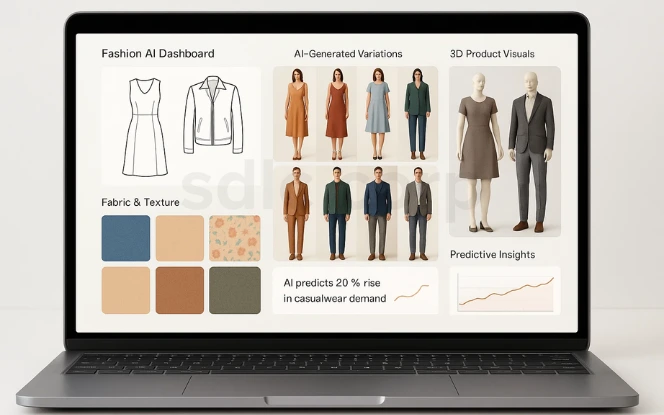
Generative AI in fashion can generate:
- Design sketches aligned with brand guidelines.
- Fabric textures and prints with unique variations.
- Virtual product visuals for digital catalogs and e-commerce.
- Predictive insights for demand forecasting and supply chain planning.
Applications of Generative AI in Fashion
The fashion industry operates across design, production, and retail cycles that change quickly. Generative AI supports these workflows by assisting with design ideation, trend analysis, and content generation for product catalogues. Many teams explore Generative AI development services to build systems that can process visual, textual, and historical sales data together.
AI-Powered Fashion Design
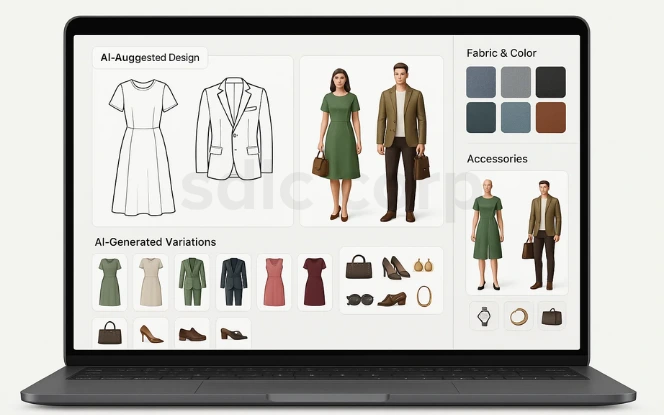
- Generates sketches, patterns, and full collections within minutes.
- Allows designers to explore hundreds of variations quickly.
- Suggests unique combinations of colors, fabrics, and styles.
- Helps uncover ideas that might be missed through manual design.
Personalized Shopping Experiences
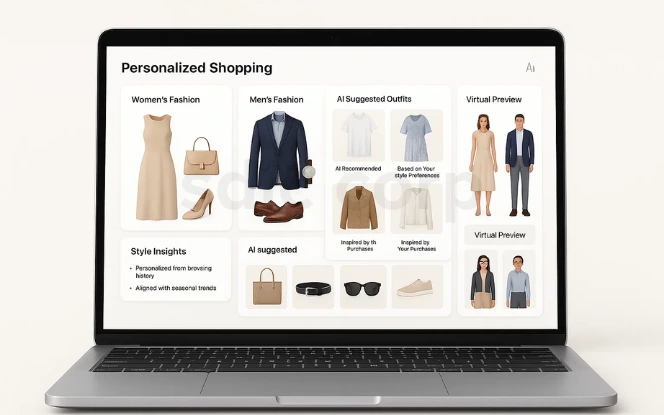
- Creates tailored outfit recommendations for each shopper.
- Analyzes browsing behavior, past purchases, and style preferences.
- Suggests complete looks or complementary items in real time.
- Makes the shopping journey more curated and engaging.
- Can increase revenue by up to 15%, according to industry research.
Virtual Try-Ons and Digital Models
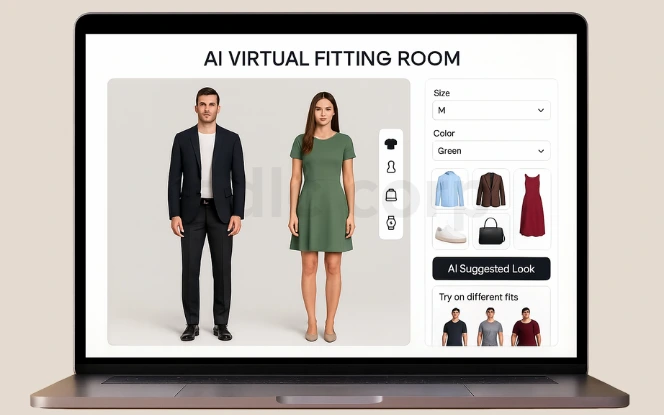
- Provides AI-powered fitting rooms with realistic avatars.
- Let’s customers preview clothing digitally before purchase.
- Makes online shopping feel more interactive and trustworthy.
- Reduces return rates by improving buyer confidence.
- Supports inclusivity with avatars across body types and styles.
Sustainable Fabric and Material Innovation
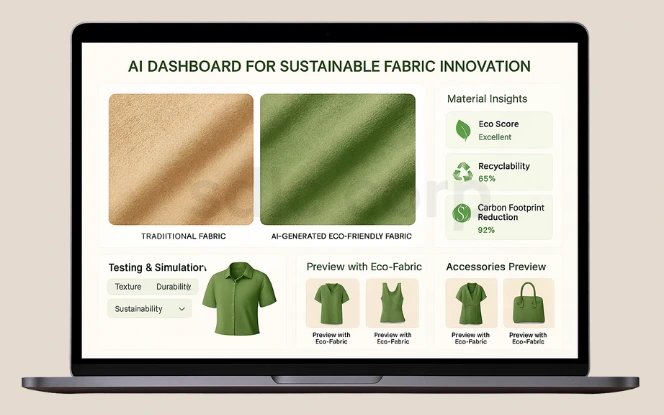
- Designs and simulates eco-friendly and recyclable textiles.
- Enables experimentation with bio-based fabrics.
- Reduces reliance on resource-heavy traditional materials.
- Minimizes waste by testing designs digitally before production.
- Helps brands meet rising sustainability expectations.
Smart Supply Chain and Inventory Optimization

- Aligns production closely with real-time market demand.
- Uses predictive models to forecast inventory needs.
- Prevents both overproduction and stockouts.
- Improves efficiency across the entire supply chain.
- Supports sustainability by reducing material and resource waste.
Beyond design, fashion businesses rely on accurate forecasting and coordination across suppliers and retailers. Generative AI can assist with demand planning reports, vendor communication drafts, and inventory insights. These systems often rely on broader AI development services to integrate generative outputs with existing analytics and operational platforms.
Automated Marketing Content Creation

- Produces product images, digital lookbooks, and campaign visuals at scale.
- Cuts reliance on expensive, time-consuming photoshoots.
- Maintains brand consistency across websites, apps, and social platforms.
- Speeds up seasonal and promotional campaign launches.
- Makes large-scale content creation cost-effective.
Automated Marketing Content Creation
- Tracks and predicts emerging fashion trends in real time.
- Analyzes data from runway shows, retail sales, and social media.
- Identifies upcoming colors, fabrics, and styles.
- Helps brands stay aligned with fast-changing customer preferences.
- Reduces the risk of launching designs that fail to resonate.
Technical Backbone of Generative AI in Fashion
| AI Technology | Application in Fashion | Example Use Case |
|---|---|---|
| GANs | Design sketches, variations | AI-generated concept collections |
| Diffusion Models | Product visuals | Hyper-realistic e-commerce images |
| Reinforcement Learning | Supply chain, pricing | Demand-driven production planning |
| NLP | Chatbots, virtual stylists | Personalized shopping assistants |
| Computer Vision | Virtual try-ons, recognition | AR-based fitting room technology |
These technologies form the core infrastructure of AI in fashion, enabling applications that improve design, marketing, and operations.
Benefits for Fashion Brands
Generative AI is giving fashion companies more than just speed and efficiency it’s helping them reinvent how they work and connect with customers. Here are some of the biggest benefits:
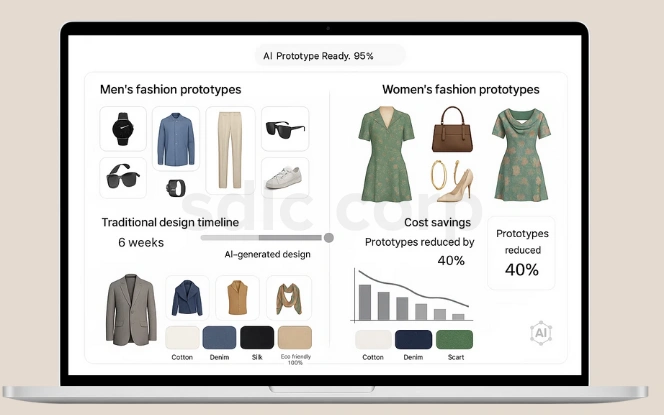
- Speed: AI shortens design cycles, helping brands move up to 30–40% faster from concept to market.
- Cost Efficiency: By generating digital prototypes, AI reduces the need for expensive and time-consuming physical samples.
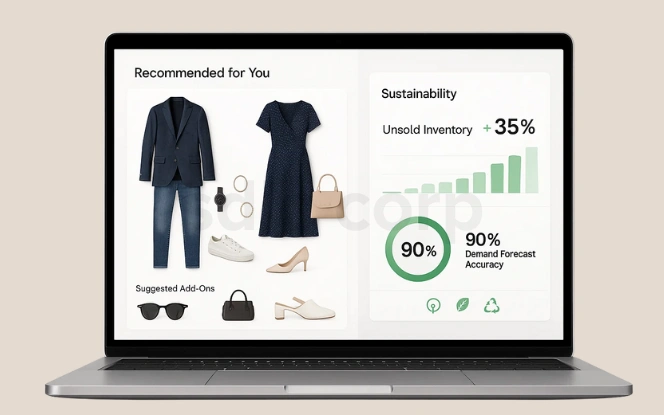
- Customer Experience: Personalized recommendations and AI-powered styling tools make shopping more engaging, which improves loyalty and conversion rates.
- Sustainability: Smarter demand forecasting ensures fewer unsold items, reducing waste and overproduction.
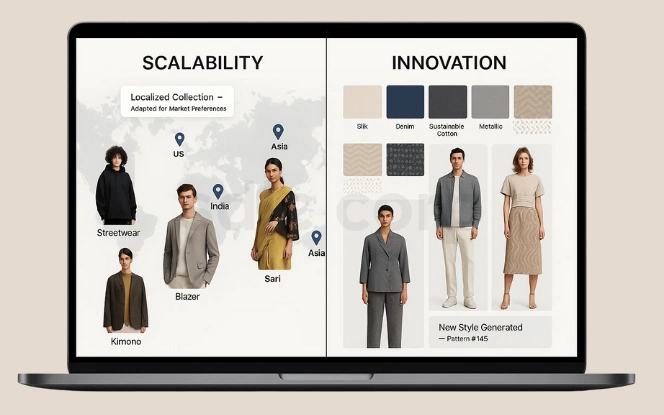
- Scalability: AI systems can easily scale across regions, delivering localized designs and personalized shopping at a global level.
- Innovation: The technology encourages continuous experimentation with new fabrics, patterns, and styles, keeping collections fresh and competitive.
Risks and Challenges
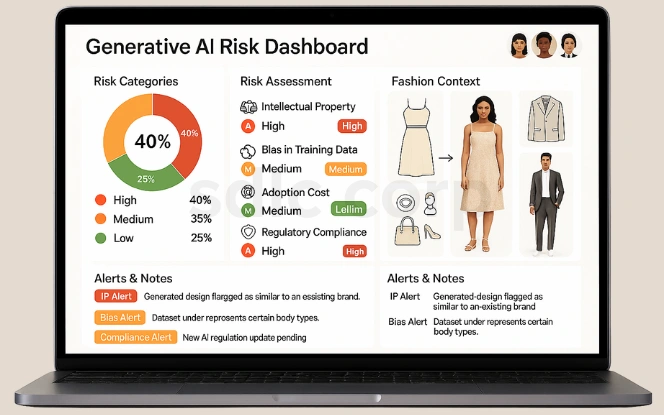
While generative AI offers major opportunities, it also brings challenges that fashion businesses must address carefully.
- Intellectual Property (IP): AI-generated designs may resemble existing works, raising copyright concerns.
- Bias in Training Data: Non-diverse datasets can unintentionally reinforce cultural or style stereotypes.
- Adoption Cost: Implementing AI requires investment in infrastructure, skilled teams, and integration tools.
- Creative Over-Reliance: Relying too heavily on AI risks losing the human touch of storytelling and emotional design.
- Regulatory Compliance: Fashion companies must adhere to evolving laws regarding data privacy, copyright, and the responsible use of AI.
Role of AI Development Companies in Fashion

Many fashion brands lack in-house technical expertise, making AI development companies critical partners. These companies:
- Build custom generative AI models tailored to brand data.
- Integrate AI into ERP, PLM, and e-commerce systems.
- Develop digital platforms for virtual try-ons and metaverse integration.
- Provide ongoing support for scaling and optimization.
- Ensure compliance with privacy, IP protection, and ethical standards.
Future Outlook
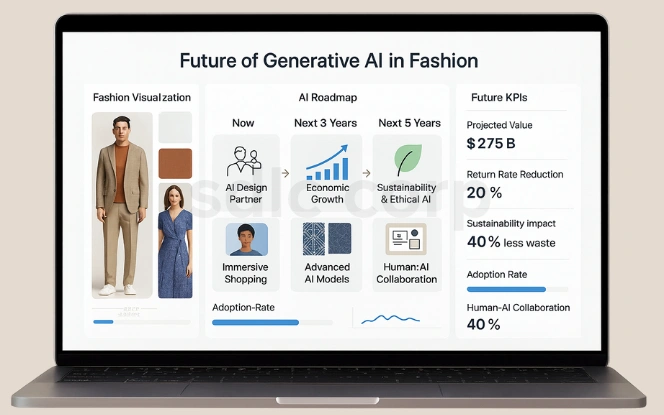
Generative AI is set to become a permanent part of the fashion industry, reshaping design, operations, and customer experiences in the years ahead.
- Generative AI as a Design Partner: Acts as a creative assistant for designers, enabling faster prototyping and new ideas while making human-AI collaboration standard.
- Economic Growth Potential: Expected to contribute $150–$275 billion in value to the global fashion and luxury sectors within the next 3–5 years.
- Immersive Shopping Experiences: Combines AI with AR and VR to let customers try on outfits virtually, blending digital and physical shopping seamlessly.
- Advanced AI Models for Fashion: Multimodal and diffusion-based models will improve textile design, trend forecasting, and customer personalization.
- Sustainability and Ethical AI: Helps brands reduce waste, adopt eco-friendly materials, and meet stricter ethical and regulatory standards.
- Human-AI Collaboration: Allows designers to focus on creativity and storytelling while AI handles data-driven, repetitive tasks.
Design Assistance and Trend Analysis
Design teams often work with large volumes of reference material, from past collections to market data. Generative AI can help analyse patterns, suggest variations, and summarise trend insights. In these cases, a Generative AI consulting company may support evaluation of suitable models, data sources, and usage boundaries, especially when creative outputs need review.
Regional Deployment and Market Considerations
Fashion brands operating across regions face differences in data rules, consumer behaviour, and infrastructure. For companies building or scaling AI systems in North America, AI development services in the US can help align generative models with local regulations and operational requirements while maintaining consistency across global platforms.
Conclusion
Generative AI is revolutionizing the fashion industry by speeding up design cycles, optimizing supply chains, driving sustainability, and delivering hyper-personalized shopping experiences. It is no longer just an emerging technology; it is a strategic necessity for brands that want to stay competitive in a fast-changing market.
The industry’s future lies in human-AI collaboration, where creativity and technology work together to deliver innovation at scale. For fashion businesses, this means investing in expertise and infrastructure today to gain a lasting edge tomorrow. To unlock these opportunities, it’s essential to hire Generative AI developers who can design tailored solutions that meet evolving industry needs.
Related Blogs You Should Explore:
FAQ's
How Is Generative Ai Used In Fashion Design?
It helps create sketches, prototypes, and textile patterns. GANs and diffusion models generate variations quickly, reducing design cycles from months to weeks.
Can Generative Ai Improve Sustainability In Fashion?
Yes, it can. AI forecasts demand, optimizes production, and simulates eco-friendly fabrics, reducing waste and supporting sustainability initiatives.
What Are The Risks Of Using Generative Ai In Fashion?
Risks include copyright conflicts, bias in training data, high adoption costs, and over-reliance on AI for creativity.
How Do Ai Development Companies Support Fashion Brands?
They build custom AI models, integrate them with systems, and ensure compliance with data privacy and IP laws, making adoption smoother.
What Is The Future Of Generative Ai In Fashion?
Generative AI will become a standard design assistant, power digital fashion, enable large-scale personalization, and help brands meet sustainability regulations.
How Does Ai Improve Customer Experience In Fashion?
AI powers personalized recommendations, virtual try-ons, and chatbots, improving customer engagement and reducing return rates.
Which Fashion Brands Are Using Generative Ai Today?
Leading global retailers and fashion houses already use AI for design, demand forecasting, marketing, and immersive shopping experiences.

